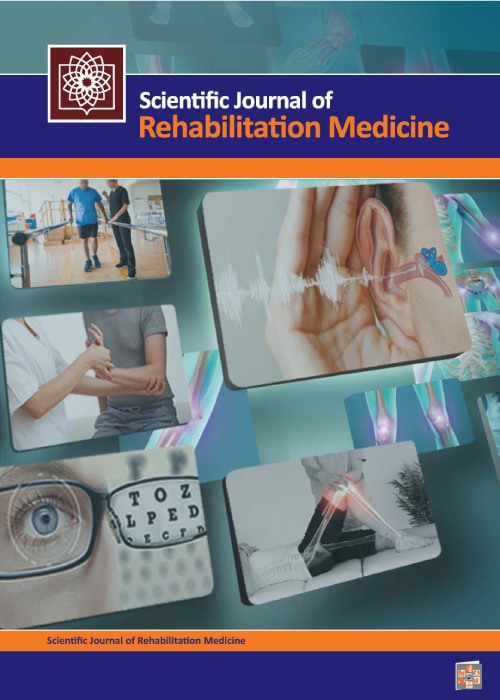Effect of Scapular Movement Impairment on Functional Stability of Shoulder Girdle and Scapulohumeral Rhythm in Elite male Volleyball Players
The shoulder girdle is at higher risk of injury in overhead sports like volleyball. Repeated movements with high speed and power can cause changes in scapular position and lead to shoulder girdle dysfunction. This study aims to assess the effect of scapular movement impairment on functional stability of the shoulder girdle and the scapulohumeral rhythm in elite male volleyball players
In this descriptive-comparative study, 80 male volleyball players aged 18-35 years including 40 with scapular downward rotation syndrome (SDRS) (age=22±2.8 years, weight=82.50±1.3 kg, and height=193±3.2 cm) and 40 with scapular abduction syndrome (SAS) (age=24±2.1 years, weight=81.40±1.3 kg, and height=192±2.9 cm) participated who were selected purposefully. They underwent the scapular dyskinesis test and Kibler’s shoulder lateral slip test. The scapulohumeral rhythm was measured at four positions (0, 45°, 90°, and 135°) using two inclinometers. The Y-balance test-upper quarter (YBT-UQ), seated medicine ball throw test (SMBT), and closed kinetic chain upper extremity stability test (CKCUEST) were used to measure the functional stability of the upper extremity. Shapiro-Wilk test was used for examining the normality of data distribution, independent t-test was used to compare the differences between groups.
There was a significant difference in the scapulohumeral rhythm at 45° (P=0.001), 90° (P=0.001), and 135° (P=0.001) between the two groups (Mean difference= 18.27, 21.27, and 27.87, respectively), where the SDRS group had lower scapular upward rotation than the SAS group. The results of YBT-UQ showed that the superior-lateral reach (P=0.001) and composite (P=0.001) scores of the dominant hand were significantly different between the two groups (Mean difference = 9.37 and 10.41, respectively), where the SDRS group had lower scores than the SAS group. No significant difference was found in the medial (P= 0.223) and inferior-lateral (P= 0.111) reach scores. Moreover, the results showed no significant difference between the groups in the SMBT (P=0.124) and CKCUEST (P=0.875) scores.
The occurrence of scapular movement impairment affects the YBT-UQ score and leads to scapulohumeral rhythm disturbance in volleyball players. Even if the activity is stopped, the ideal and optimal alignment will not be created unless efforts are made to improve the movement pattern.
- حق عضویت دریافتی صرف حمایت از نشریات عضو و نگهداری، تکمیل و توسعه مگیران میشود.
- پرداخت حق اشتراک و دانلود مقالات اجازه بازنشر آن در سایر رسانههای چاپی و دیجیتال را به کاربر نمیدهد.




